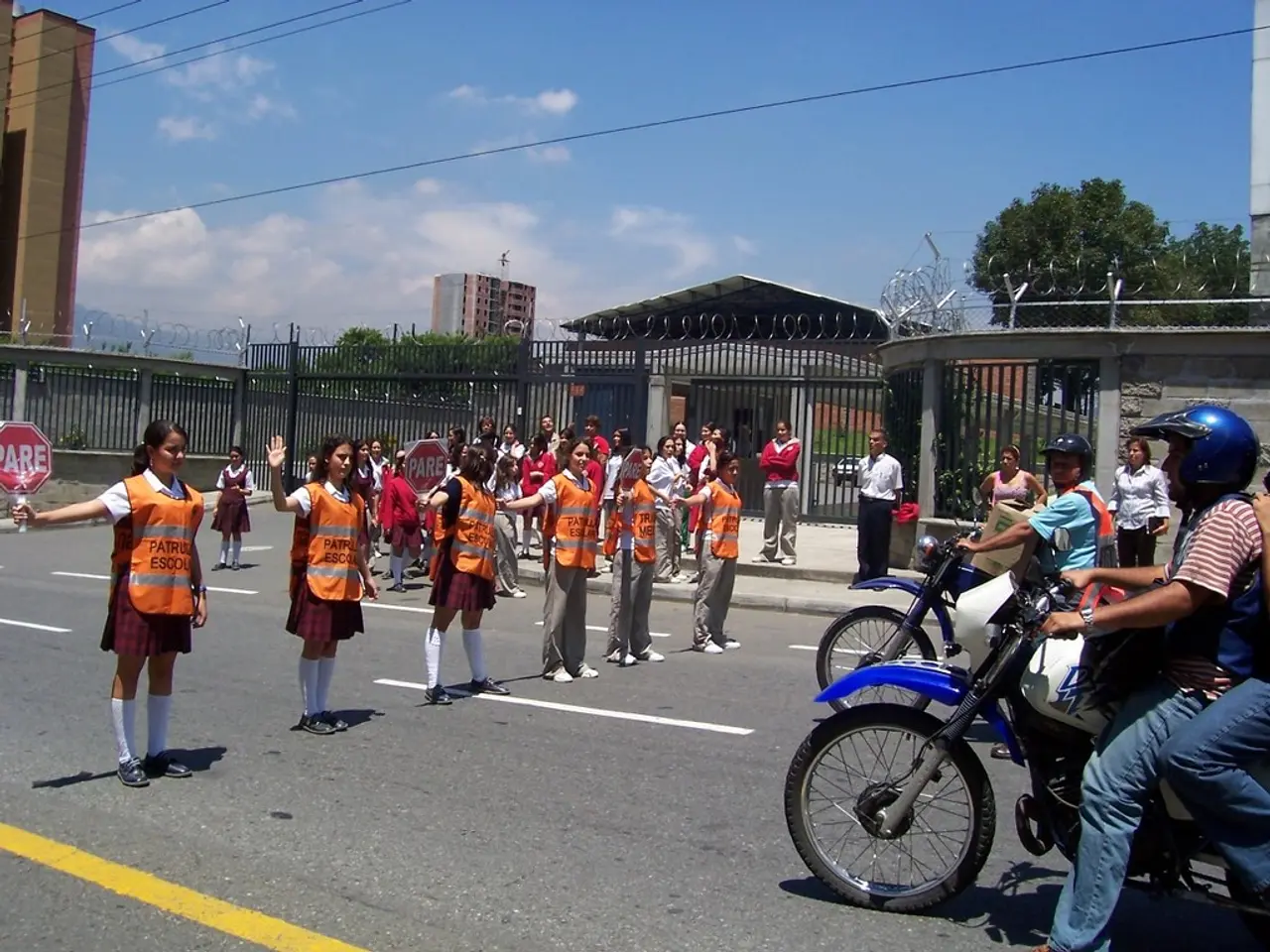Streets Around Schools Becoming Pedestrian Zones for Safety and Reduced Traffic Congestion
In the UK, School Streets are becoming increasingly popular as a means to create pedestrian and cycling zones outside schools, with the primary aim of reducing congestion, improving air quality, and enhancing road safety during drop-off and pick-up times [2][3]. These initiatives are typically operational Monday to Friday and are managed through manual barriers or volunteers, or technological solutions such as Automatic Number Plate Recognition (ANPR) camera systems [2].
## Implementation Strategies
The success of School Streets relies on a combination of guidance, funding, and community and school engagement. Active Travel England has published comprehensive guidance on implementing School Streets, which local authorities, schools, and elected members are encouraged to use [1]. This guidance is informed by research and ongoing evaluation, such as the review conducted by Edinburgh Napier University [1].
Initiatives are supported by government funding mechanisms like the Active Travel Fund (ATF), with Transport for London (TfL) committing to fund up to 222 new School Streets in London over the coming years [1][2]. Local authorities actively engage with schools, residents, and businesses throughout the scheme’s development, monitoring, and evaluation, including consultations, feedback collection, and ongoing dialogue to ensure the needs of all stakeholders are addressed [3][4].
## Successful Partnerships
Collaboration between local authorities and schools is crucial for the successful implementation of School Streets. For example, in Enfield, the council collaborates with schools by requiring them to complete an Expression of Interest form and by providing resources to manage and expand the initiative [2]. TfL’s funding agreements with London boroughs exemplify successful central-local partnerships, supporting the rollout of hundreds of School Streets by leveraging resources and expertise [1].
Many schemes also rely on partnerships between local authorities, technology providers, and community members. For instance, some schemes use volunteers to operate manual barriers, while others employ technology like ANPR cameras [2].
## Monitoring and Evaluation Strategies
Monitoring focuses on understanding the effects of School Streets on air quality, traffic reduction, and modal shift (e.g., more walking, cycling, or scooting). For instance, a TfL study found that School Streets reduced nitrogen dioxide at drop-off time by up to 23%, and 18% of parents reported driving to school less when their child attended a school with a School Street [2]. Continuous feedback from schools, residents, and businesses is integral to the monitoring process, helping authorities assess the scheme’s suitability, feasibility, and perceived safety improvements [3][4]. Local authorities publish trial reports and review outcomes regularly to refine implementation and address any concerns raised by the community [3][4].
In conclusion, School Streets in the UK are a collaborative effort involving multiple stakeholders, guided by robust best practice and supported by ongoing evaluation and community engagement [1][2][3]. The initiative has demonstrated significant potential in reducing congestion, improving air quality, and promoting active travel, making it an attractive solution for towns and cities across the country. To learn more about working with the School Streets initiative, email the Education team at education@[your website].
[1] Active Travel England (2021). School Streets: A Guide for Local Authorities. Available at: https://www.gov.uk/government/publications/school-streets-a-guide-for-local-authorities/school-streets-a-guide-for-local-authorities-2
[2] TfL (2021). School Streets: Improving Road Safety, Air Quality and Active Travel. Available at: https://tfl.gov.uk/info-for/schools/safety/school-streets
[3] Edinburgh Napier University (2020). Evaluation of School Streets Schemes in Edinburgh. Available at: https://www.napier.ac.uk/__media/content/files/school-streets-evaluation-report-final-version-13-06-2020.pdf
[4] Playing Out (2021). School Streets. Available at: https://playingout.net/school-streets/
- In addition to promoting active travel and enhancing road safety, School Streets initiatives in the UK can also contribute to health-and-wellness by encouraging lifestyle changes such as fitness-and-exercise and sustainable-living through walking, cycling, or scooting to school.
- As the implementation of School Streets becomes more widespread, it can serve as a valuable platform for education-and-self-development and personal-growth, reinforcing the importance of climate-change awareness and environmental-science, as well as home-and-garden-related topics such as sustainable living.
- The success of School Streets is not solely dependent on technological solutions like ANPR camera systems; partnerships between local authorities, schools, technology providers, and community members are essential for ensuring the smooth operation and continuous development of these initiatives.
- The monitoring and evaluation strategies of School Streets can have far-reaching effects, as the data collected on air quality, traffic reduction, and modal shift can inform policy decisions in science, health-and-wellness, fitness-and-exercise, and education-and-self-development, leading to a healthier and more sustainable lifestyle for all.
- By supporting School Streets initiatives, local authorities and schools are demonstrating a commitment to improving their communities, creating a healthier, greener, and safer environment for children, families, and residents, while also promoting learning and personal growth.




